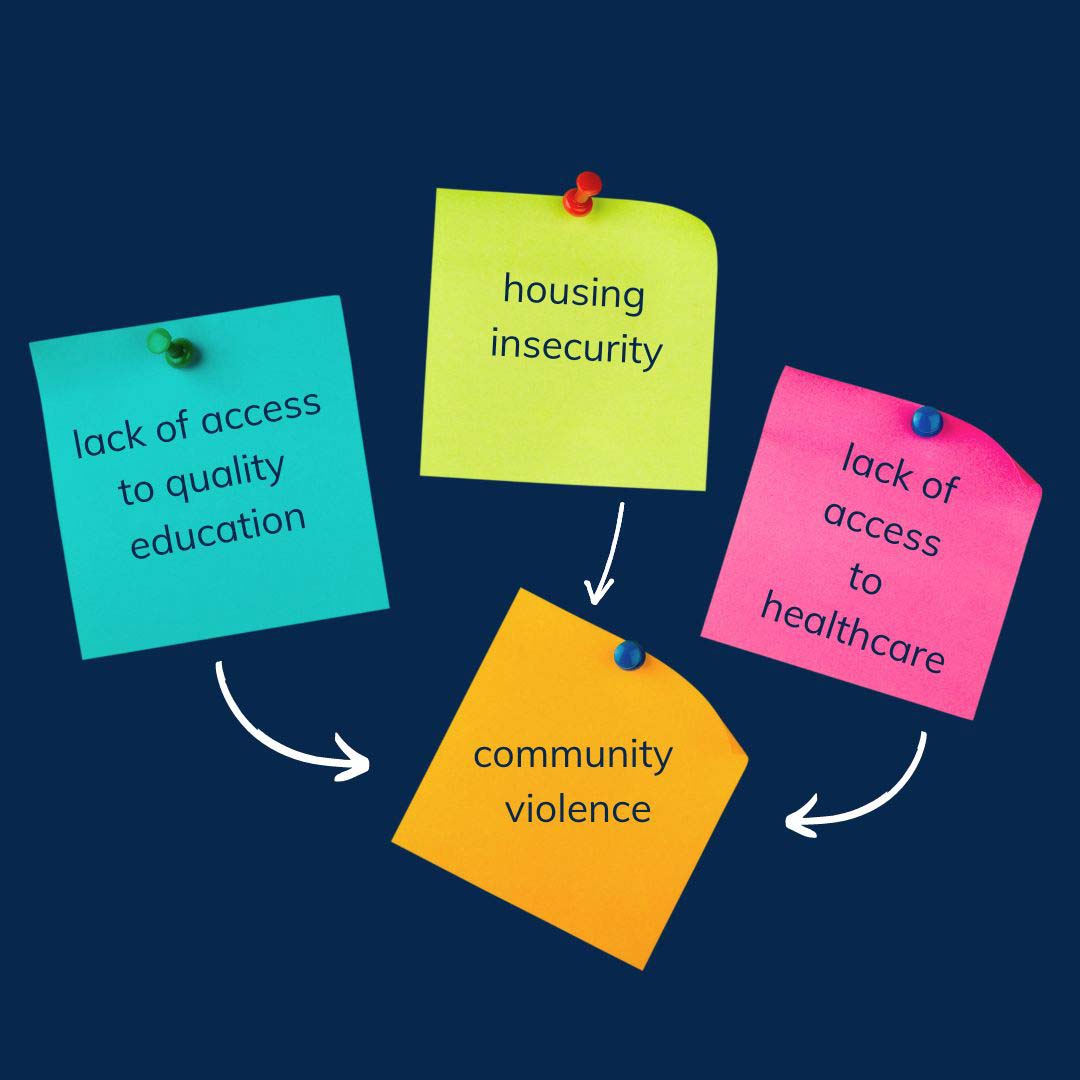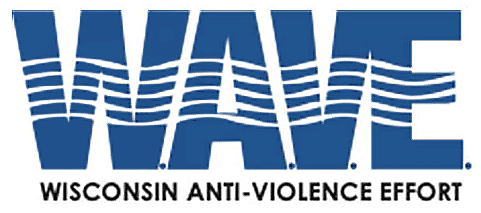What is Community Violence?
Community violence refers to acts of violence within a community or neighborhood. It may happen between strangers or people who know each other, but it generally occurs in public places. Community violence impacts both the physical and mental health of individuals, as well as the overall safety and stability of a community.

Community violence is a pressing issue that we must confront with urgency and compassion. It is important to recognize that this problem has deep historical roots intertwined with systemic racism.
While the increasing pervasiveness of mass shootings is incredibly disturbing, it is important to acknowledge that mass shooting deaths make up a tiny percentage of gun deaths and are far less common than community violence.
What Causes Community Violence?
To understand community violence, we must look at root causes such as lack of access to resources like education, jobs that pay living wages, safe and affordable housing, healthy food, and healthcare.
Historically, racist policies like redlining, which deprived Black and Brown people of the ability to live in certain neighborhoods, also denied these communities access to these essential resources.
This has caused predominantly Black and Brown communities to be disproportionately impacted by community violence.1,2 Understanding this context is essential to developing effective solutions.
How Can We Stop Community Violence?
To make lasting change, we must address the systemic racism that sustains these inequities. This requires a commitment to dismantling discriminatory policies and structures. It means advocating for social justice, equal access to resources, and creating an inclusive society where everyone feels valued and safe.
Addressing structural inequalities can also help break the cycles of violence that occur as a result of generations of trauma.
We must also recognize that community violence affects everyone, regardless of our backgrounds, and it is our collective responsibility to address it. By fostering empathy, promoting dialogue, and supporting grassroots initiatives, we can work together to create safer, more equitable communities.
Wisconsin lacks some key gun violence prevention policies that could also reduce community violence.3 Commonsense gun reforms, like universal background checks, can help regulate access to firearms so that people with a history of committing violent acts cannot access firearms as easily.
Community violence intervention (CVI) programs have grown in popularity recently, because a growing body of research is increasingly showing how effective they can be in reducing violence in heavily impacted communities. CVI programs focus on stopping violence before it starts through mediation and closing resource gaps. Read more about community violence intervention here.
The True Impact of Community Violence
- In Wisconsin, 76% of all homicides are committed with a gun.4
- The firearm homicide rate for Black Wisconsinites is more than 32 times higher than for white Wisconsinites.5
- On average in Wisconsin, 223 people are killed by gun homicide every year. Every day, an average of one person is wounded by an assault with a gun.6
- Between 2012 and 2021, the rate of gun homicides in Wisconsin increased by 123%. This is compared to a 73% increase nationally.7
- In Wisconsin, guns are the number one killer of children and teens. On average, 35 children and teens die by gun homicide in Wisconsin each year.8
- The financial cost of gun violence in Wisconsin is $1,448 per resident every year.9 This means we cannot afford not to act.
We share these numbers to illustrate the pervasiveness of gun violence. It is important to remember that every victim of gun violence has family and friends. These injuries and deaths are heartbreaking to entire communities of people.
